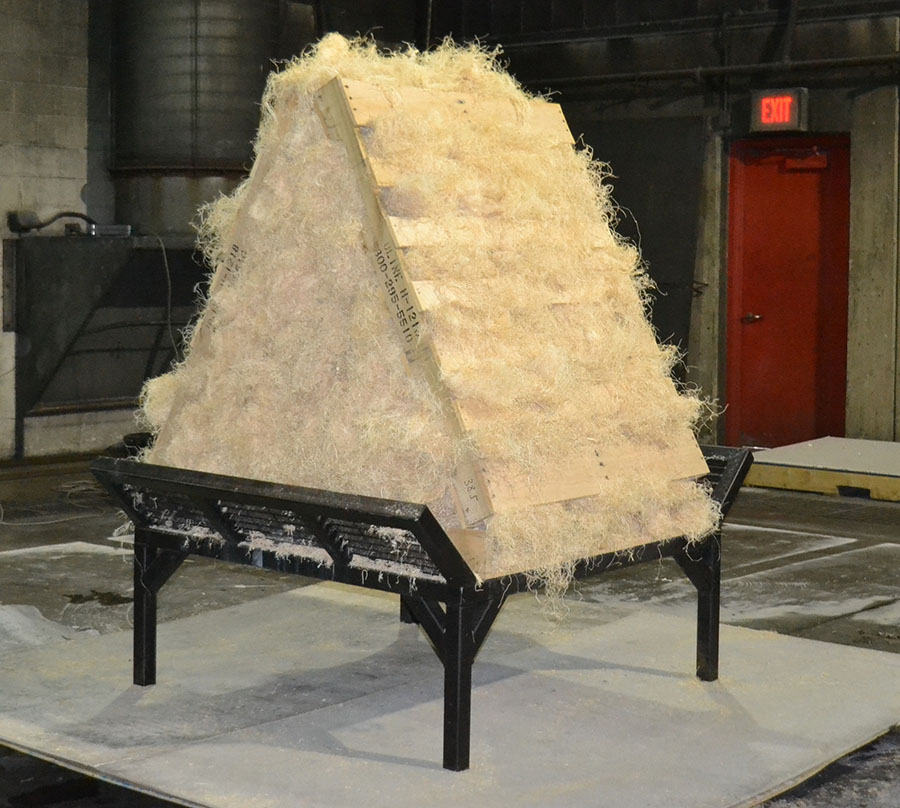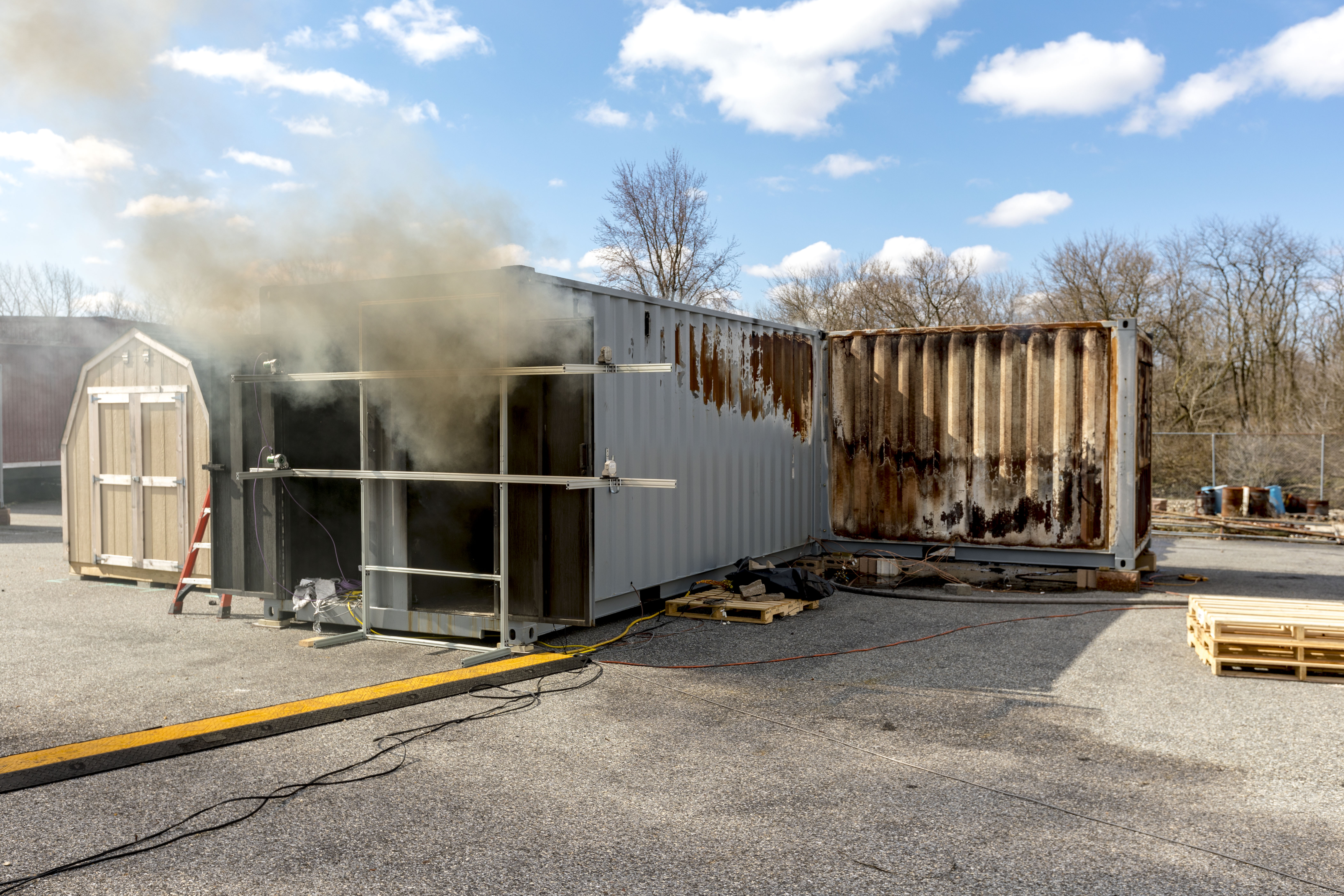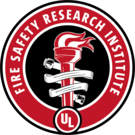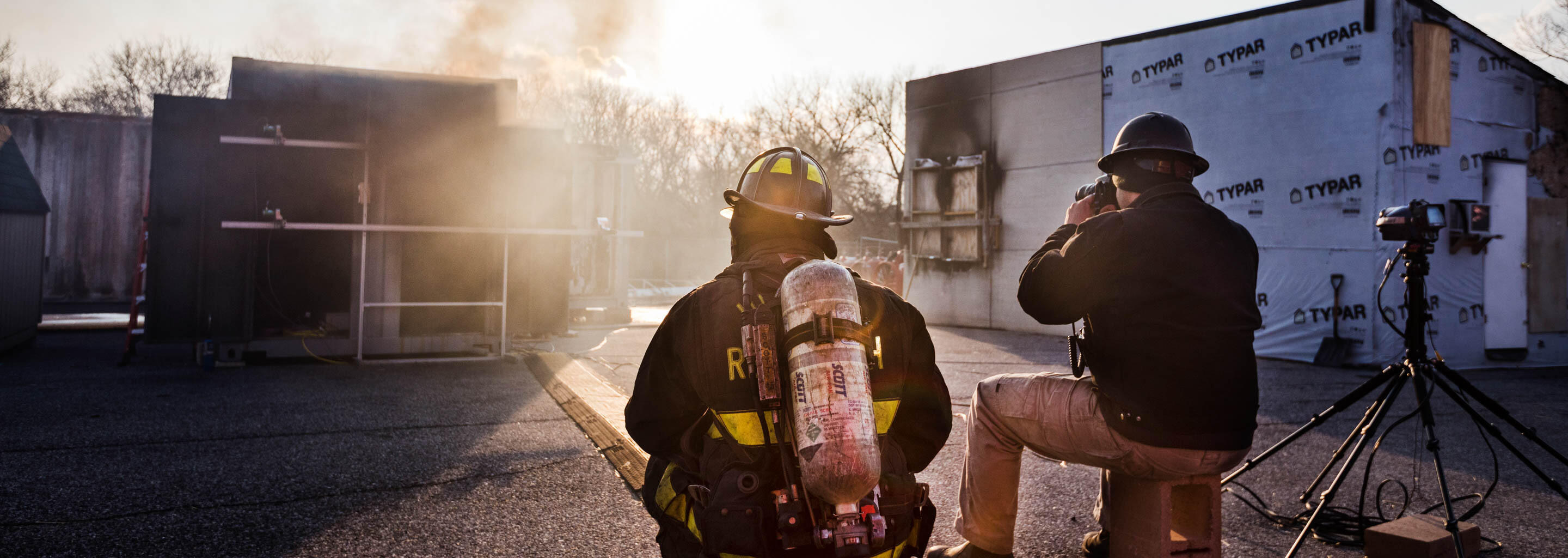As part of the DHS/AFG grant “Study of the Fire Service Training Environment: Safety, Fidelity, and Exposure,” UL FSRI conducted experiments to quantify the fire dynamics and fidelity of common training fuels. The study also compared common wood-based training fuels to innovative fuel packages and modern furnishings both in free burn and within a compartment.
Access the report HERE
The free burn cases were conducted under an oxygen consumption calorimeter to compare heat release rate (HRR) and total energy released. Below you will find an example of three pallets in a triangle configuration with a one bale of excelsior, prior to being burned in the UL Oxygen Consumption Calorimetry Laboratory.

The compartment burns were conducted in a metal container prop configured as a long hallway with a burn room at the end. The prop used for these experiments appears below.

The results of these experiments were then analyzed to provide fire service instructors with a quantitative comparison of potential fuel loads for live fire training along with considerations for improving the fire dynamics learning experience during both live fire training and fire dynamics demonstrations.
To design effective training evolutions, instructors should use these research results to compliment personal experience from both the training ground and the fire ground. Although this report covers a significant number of fuel loads to provide clarification to the efficacy of different fuels used in the fire training environment, future research is still needed to identify and analyze the effectiveness of additional training methods, both those used as interactive as well as demonstrative.
Training methods which utilize different structure types, lining materials, fuel types, as well as differing ventilation and suppression configurations may prove more or less effective than the methods evaluated in this study.
The training considerations drawn from this report will help to increase firefighters’ understanding of fire dynamics, and help instructors better understand fuel packages and the fire dynamics that they produce.
The following training considerations are highlighted in this report:
- Fuel package design can take advantage of NFPA 1403 compliant fuels
- Training fuel packages do not need to be tended
- Obscuration can be increased without using synthetic fuels
- When using NFPA 1403 compliant wood based fuels, orientation and quantity are important for predicting fire size
- Select the fuel package for the intended lesson
- Wood-based training fuels can create hazardous conditions without transitioning to flashover

